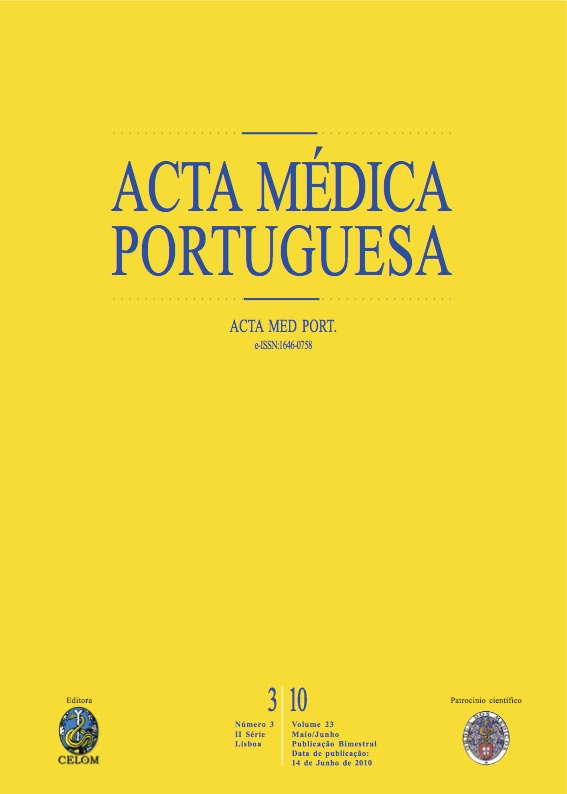Neurofibromatosis type 1 - a malignant evolution in pediatric age.
DOI:
https://doi.org/10.20344/amp.625Abstract
Neurofibromatosis type 1 is an autosomal dominant disease affecting one in 3000 to one in 4000 people, with a great variability of clinical expression. Individuals affected with neurofibromatosis type 1 have an increased risk of developing both benign and malignant tumors, supporting the classification of tumor predisposition syndrome. The most common tumor is the neurofibroma, a heterogeneous benign nerve sheath tumor, which represents the primary clinical characteristic of neurofibromatosis. The case reported refers to a adolescent boy with neurofibromatosis type 1 diagnosed at 20 months, who presented progressive growth of dorsal and lumbar intraspinal tumors since six years of age and diagnosis of malignant nerve sheath tumors at 17 years of age. In addition to describing a rare presentation of neurofibromatosis, because of location and early onset of complications, the authors discuss the difficulties of the therapeutic approach of this case.Downloads
Downloads
How to Cite
Issue
Section
License
All the articles published in the AMP are open access and comply with the requirements of funding agencies or academic institutions. The AMP is governed by the terms of the Creative Commons ‘Attribution – Non-Commercial Use - (CC-BY-NC)’ license, regarding the use by third parties.
It is the author’s responsibility to obtain approval for the reproduction of figures, tables, etc. from other publications.
Upon acceptance of an article for publication, the authors will be asked to complete the ICMJE “Copyright Liability and Copyright Sharing Statement “(http://www.actamedicaportuguesa.com/info/AMP-NormasPublicacao.pdf) and the “Declaration of Potential Conflicts of Interest” (http:// www.icmje.org/conflicts-of-interest). An e-mail will be sent to the corresponding author to acknowledge receipt of the manuscript.
After publication, the authors are authorised to make their articles available in repositories of their institutions of origin, as long as they always mention where they were published and according to the Creative Commons license.









